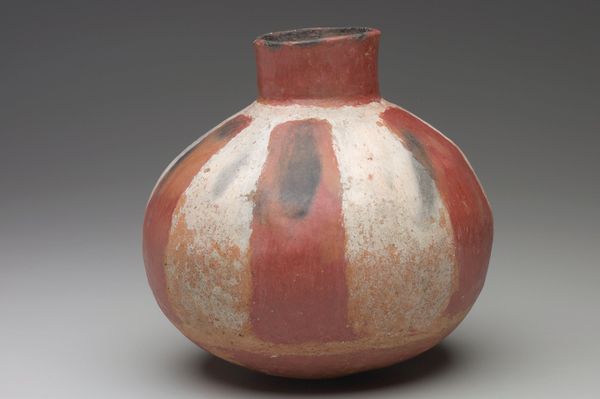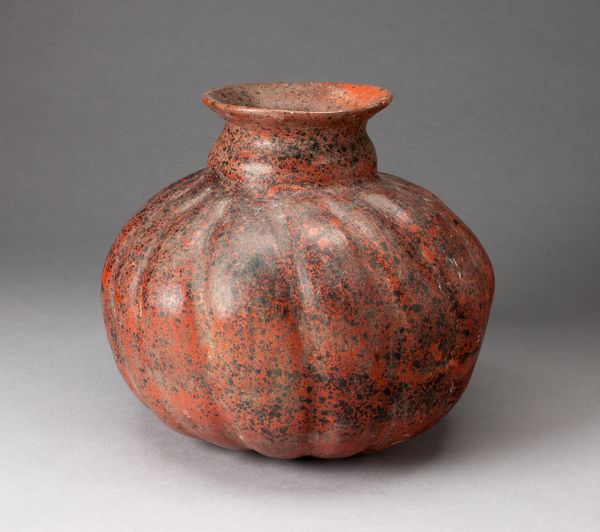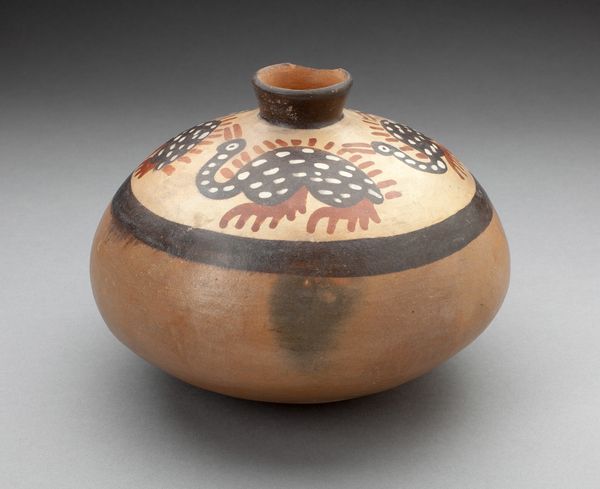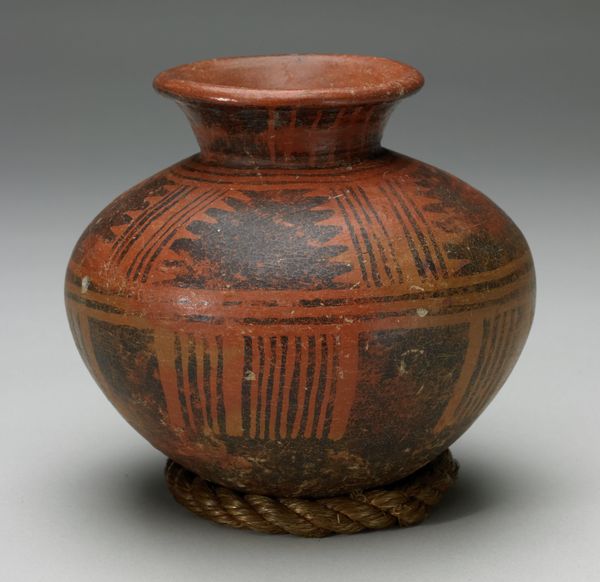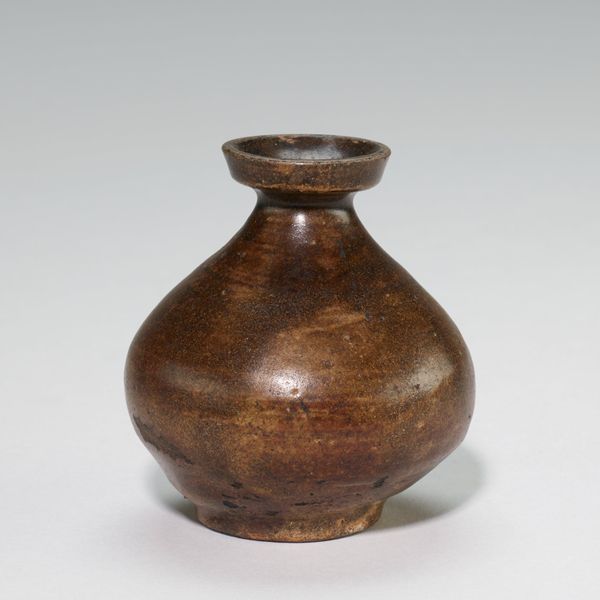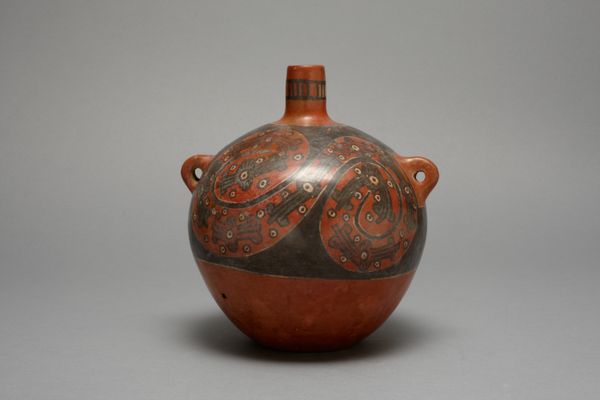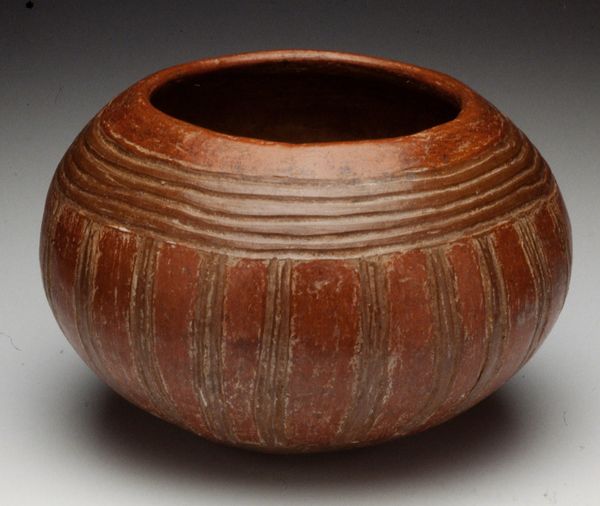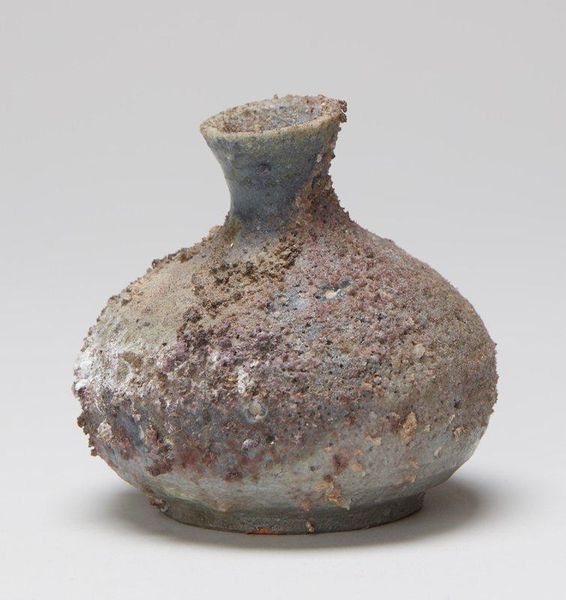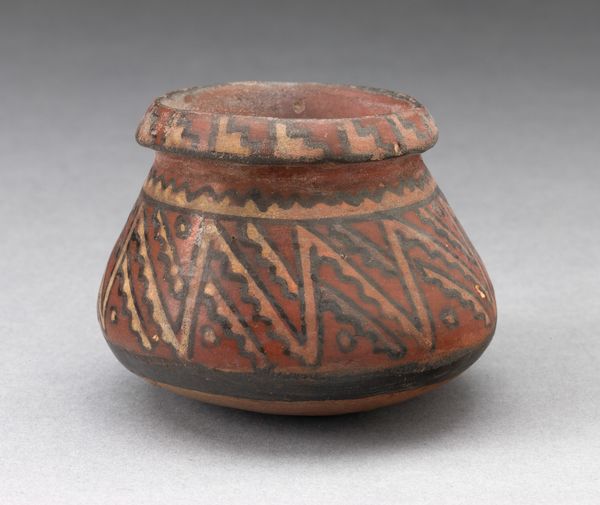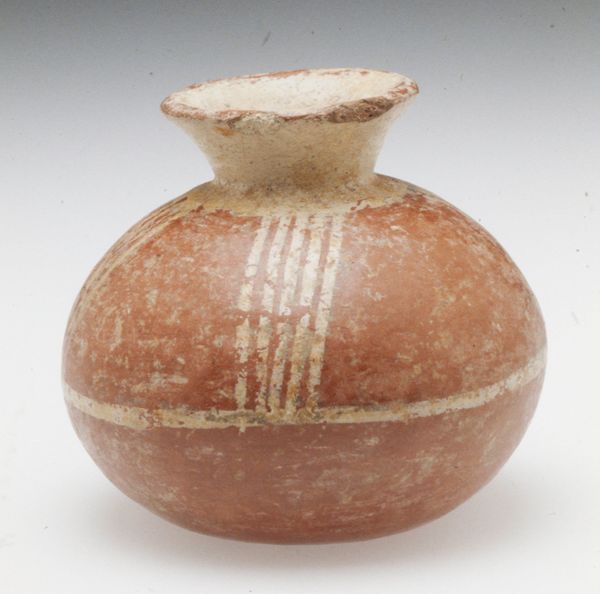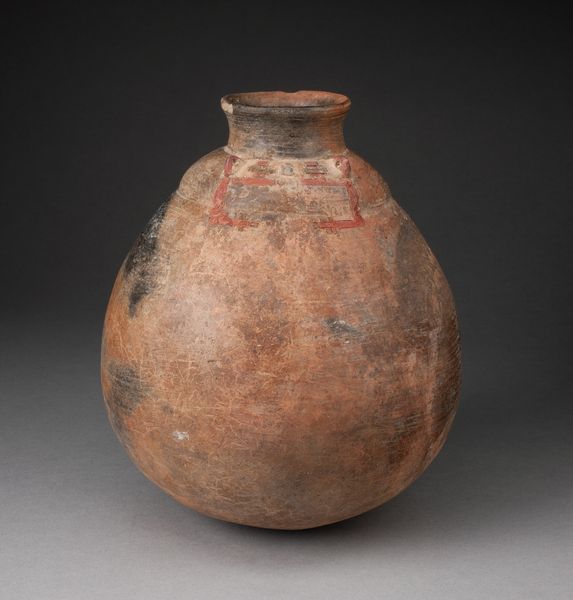
ceramic, earthenware, terracotta
#
ceramic
#
earthenware
#
terracotta
#
indigenous-americas
Dimensions: 6 3/4 x 6 3/4 in. (17.1 x 17.1 cm)
Copyright: Public Domain
Curator: What strikes me first about this "Bulbous Bodied Bowl," made around the 3rd century by the Nayarit people, is the evident handwork. The earthy, somewhat uneven red earthenware and simple painted designs speaks to a specific mode of pre-industrial production. Editor: Absolutely. And consider that rich terracotta color against the small white dots! There's a subtle beauty to it, a kind of groundedness. But also, given the Nayarit culture's context –their elaborate shaft tombs and funerary offerings–one wonders what role objects like these played in rituals surrounding death and ancestor veneration. Curator: Good point. Thinking about its possible function gives us a framework to understanding it, but equally interesting is the clay itself, sourced locally, carefully formed, and then fired in what would have been rudimentary kilns. The labour is baked right in, so to speak, marking human ingenuity and resourcefulness within its limited means. Editor: The repetitive nature of making ceramics is noteworthy, a daily life task. Yet these funerary bowls were not merely functional; their artistic merit reflected deeply engrained values and narratives within this community. The shapes, color palettes and embellishments speak to an identity and an act of cultural continuity and resistance through memory. Curator: Precisely. When assessing its importance today we should reflect on its creation—clay that became a cultural treasure and provides key insights into the methods, traditions and conditions in which indigenous people lived over two thousand years ago. It is the essence of what's important: the way raw material translates to useful object to signifier, embodying a unique culture, skill, and labour that existed. Editor: Right, but more than that it serves as a tangible symbol connecting us to communities deeply rooted in their lands. Indigenous voices remain relevant, especially today in times where their rights, identity, and sovereignty must continue to be acknowledged and amplified. The Bowl can remind us of this every day. Curator: Yes, its inherent artistry—born of material constraints and manual labour—transcends mere function. Editor: And reminds us that art is always intertwined with life, resistance, and collective memory.
Comments
No comments
Be the first to comment and join the conversation on the ultimate creative platform.
